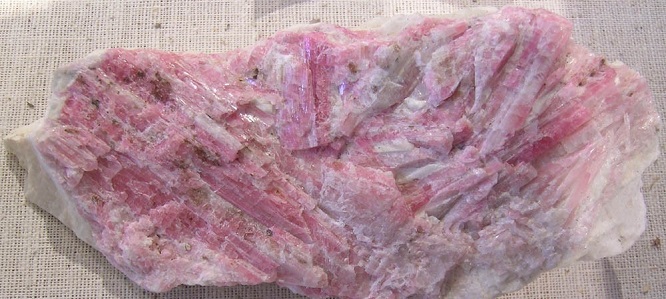Thulite - (Ca,Mn)2Al3(SiO4)(Si2O7)O(OH)
Thulite, also known as rosaline, is a a pink variety of zoisite, frequently manganian (with up to 2% of Mn2+). Thulite was originally described from Kleppan, Norway in 1820 and named after "Thule", the ancient name of Scandinavia (and mythical island). Thulite is often associated with white calcite and occurs as veins and fracture fillings transecting many types of rock.Optical properties:
• Form: Prismatic.
• Color: Colorless to pale yellow.
• Relief: Moderate.
• Cleavage: Perfect basal cleavage (001).
• Interference colors: Low (blue-yellow).

Pink thulite crystals. Norway.

Pink thulite crystals. Norway.

Pink thulite crystals. Norway.
Bibliography
• Bucher, K., & Grapes, R. (2011). Petrogenesis of metamorphic rocks. Springer Science & Business Media.
• Fossen, H. (2016). Structural geology. Cambridge University Press.
• Howie, R. A., Zussman, J., & Deer, W. (1992). An introduction to the rock-forming minerals (p. 696). Longman.
• Passchier, Cees W., Trouw, Rudolph A. J: Microtectonics (2005).
• Philpotts, A., & Ague, J. (2009). Principles of igneous and metamorphic petrology. Cambridge University Press.
• Shelley, D. (1993). Igneous and metamorphic rocks under the microscope: classification, textures, microstructures and mineral preferred-orientations.
• Vernon, R. H. & Clarke, G. L. (2008): Principles of Metamorphic Petrology. Cambridge University Press.
• Vernon, R. H. (2018). A practical guide to rock microstructure. Cambridge university press.


.jpg)
.jpg)
.jpg)
.jpg)
.jpg)
.jpg)
.jpg)
.jpg)
.jpg)
.jpg)
.jpg)
.jpg)